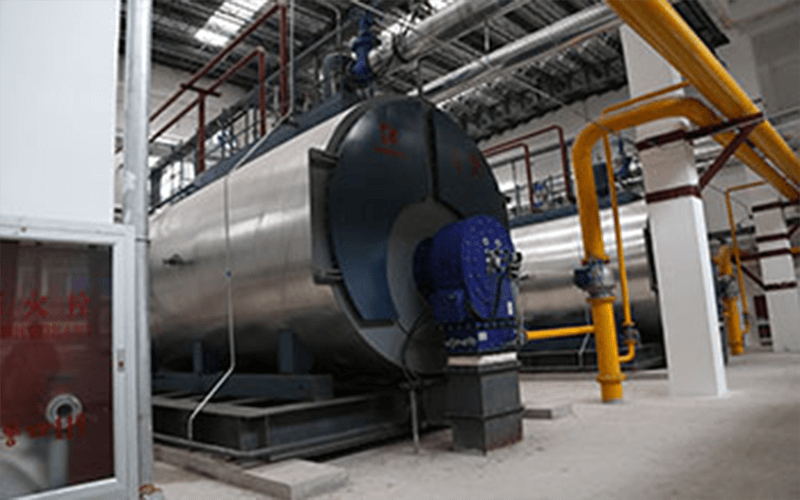How does a gas-heated boiler work?
The parameters of gas heating boiler are the main indexes to represent the performance of gas heating boiler, including gas heating boiler capacity, steam pressure, steam temperature, feed water temperature and so on. The capacity of gas heating boiler can be expressed by rated evaporation or maximum continuous evaporation. Rated evaporation is the amount of steam produced continuously per unit time under specified outlet pressure, temperature and efficiency. The maximum continuous evaporation is the maximum continuous steam production per unit time at the specified outlet pressure and temperature.

Steam parameters include the steam pressure and temperature of a gas-fired heating boiler, usually referring to superheaters, superheated steam pressures and temperatures at the outlet of reheaters, such as no superheaters and reheaters, That is to say, the saturated steam pressure and temperature at the outlet of gas heating boiler. Feed water temperature refers to the inlet temperature of economizer, and when there is no economizer, it refers to the inlet temperature of boiler tube. Gas heating boilers can be classified according to different methods. Gas heating boilers can be divided into industrial gas heating boilers, power station gas heating boilers, marine gas heating boilers and locomotive gas heating boilers according to their use. According to the outlet pressure of gas heating boilers, they can be divided into low pressure, medium pressure and high pressure. Ultra-high pressure, subcritical pressure, Supercritical pressure and other gas heating boilers; The gas heating boiler can be divided into fire tube gas heating boiler, fire pipe gas heating boiler and water pipe gas heating boiler according to the flow path of water and flue gas. Among them, the fire tube gas heating boiler and the fire pipe gas heating boiler are also called the shell gas heating boiler. According to the circulation mode, it can be divided into natural circulation gas heating boiler, auxiliary circulation gas heating boiler (that is, forced circulation gas heating boiler), DC gas heating boiler and compound cycle gas heating boiler. According to the combustion mode, the gas heating boiler is divided into chamber combustion furnace, laminar combustion furnace and boiling furnace.
In the aspect of water vapor system, after the feed water is heated in the heater to a certain temperature, the feed water enters the economizer through the feed water pipeline, and after further heating, it is fed into the pot tube and mixed with the pot water, and then goes down along the descending pipe to the inlet header of the water wall. The water absorbs the radiation heat of the furnace in the water wall tube to form the steam-water mixture through the rising tube to reach the boiler tube, and the water and steam are separated by the steam-water separation device. The separated saturated steam flows from the upper part of the boiler to the superheater, and continues to absorb heat into superheated steam at a certain temperature (at present, most of the 300 MW, the main steam temperature of 600 MW unit is about 540 ��), and then sent to the steam turbine.
In terms of combustion and smoke systems, the air supply fan heats the air into the air preheater to a certain temperature. Pulverized coal is ground into a certain degree of fine pulverized coal in the coal mill, which is carried by a part of the hot air from the air preheater and sprayed into the furnace through the burners. The mixture of pulverized coal and air from the burners burns in the furnace with the rest of the hot air, releasing a lot of heat. After combustion, the hot flue gas flows through the furnace, slag tube bundles, superheaters, economizers and air preheaters, and then passes through the dust removal device to remove the fly ash, and finally from the induced draft fan to the chimney to discharge to the atmosphere.

